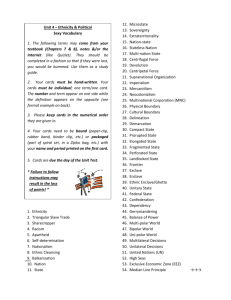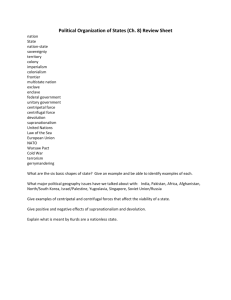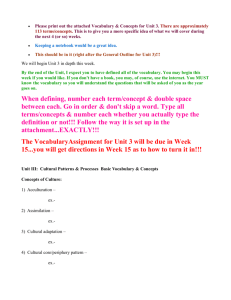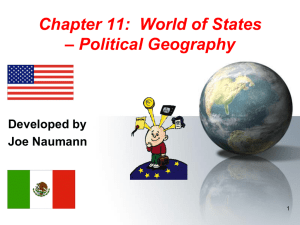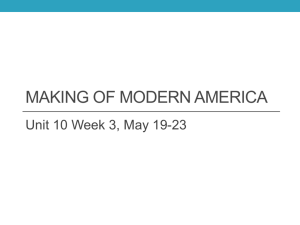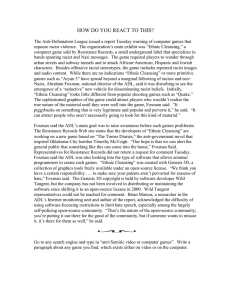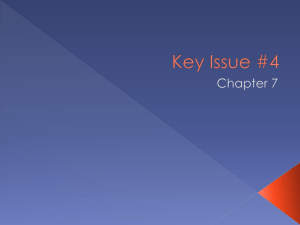AP Human Geography Course Study Guide
advertisement
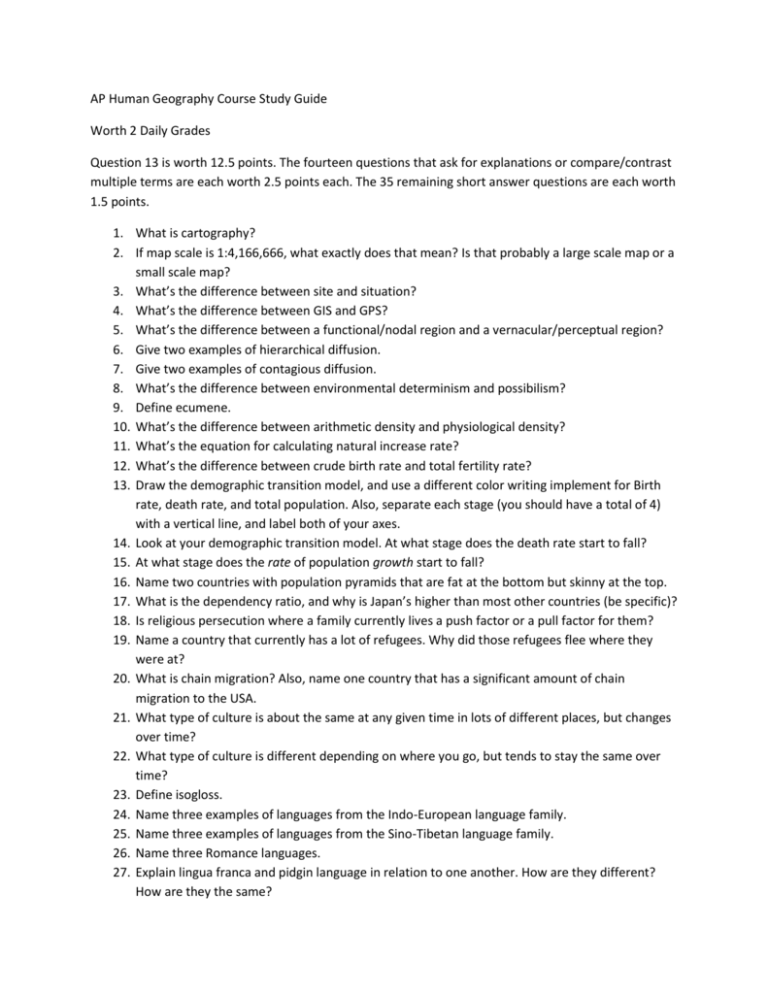
AP Human Geography Course Study Guide Worth 2 Daily Grades Question 13 is worth 12.5 points. The fourteen questions that ask for explanations or compare/contrast multiple terms are each worth 2.5 points each. The 35 remaining short answer questions are each worth 1.5 points. 1. What is cartography? 2. If map scale is 1:4,166,666, what exactly does that mean? Is that probably a large scale map or a small scale map? 3. What’s the difference between site and situation? 4. What’s the difference between GIS and GPS? 5. What’s the difference between a functional/nodal region and a vernacular/perceptual region? 6. Give two examples of hierarchical diffusion. 7. Give two examples of contagious diffusion. 8. What’s the difference between environmental determinism and possibilism? 9. Define ecumene. 10. What’s the difference between arithmetic density and physiological density? 11. What’s the equation for calculating natural increase rate? 12. What’s the difference between crude birth rate and total fertility rate? 13. Draw the demographic transition model, and use a different color writing implement for Birth rate, death rate, and total population. Also, separate each stage (you should have a total of 4) with a vertical line, and label both of your axes. 14. Look at your demographic transition model. At what stage does the death rate start to fall? 15. At what stage does the rate of population growth start to fall? 16. Name two countries with population pyramids that are fat at the bottom but skinny at the top. 17. What is the dependency ratio, and why is Japan’s higher than most other countries (be specific)? 18. Is religious persecution where a family currently lives a push factor or a pull factor for them? 19. Name a country that currently has a lot of refugees. Why did those refugees flee where they were at? 20. What is chain migration? Also, name one country that has a significant amount of chain migration to the USA. 21. What type of culture is about the same at any given time in lots of different places, but changes over time? 22. What type of culture is different depending on where you go, but tends to stay the same over time? 23. Define isogloss. 24. Name three examples of languages from the Indo-European language family. 25. Name three examples of languages from the Sino-Tibetan language family. 26. Name three Romance languages. 27. Explain lingua franca and pidgin language in relation to one another. How are they different? How are they the same? 28. 29. 30. 31. 32. 33. 34. 35. 36. 37. 38. 39. 40. 41. 42. 43. 44. 45. 46. 47. 48. 49. 50. Name two universalizing religions. Name two ethnic religions. Plessy vs Ferguson & Brown vs Board of Ed Which one said what? What is apartheid? Also, name a country where it was enforced. In the Balkans, name an ethnicity that engaged in ethnic cleansing, and one that was the victim of the ethnic cleansing. From 32, why did the ethnic cleansing take place? Name two examples (current OR historical) of stateless nations. Name the best example you can find of a nation-state. Name three examples of prorupted states. Name three examples of fragmented states. Name an example of an enclave that is not an exclave. Name an enclave that is ALSO and exclave. Name an exclave that is not an enclave. What’s the difference between subsequent and antecedent boundaries? Name an example of a superimposed boundary. What’s the difference between transhumance and pastoral nomadism? Which agricultural revolution gave us GMO’s and synthetic fertilizers and pesticides? Define maquiladoras, and indicate a country that has them. During what decade did many African nations join the United Nations, and why did they join at this time? What’s the difference between centripetal and centrifugal forces? Describe a centrifugal force that led to the breakup of a country, region, or alliance. Who are the 4 Asian Tigers? What is sovereignty?
